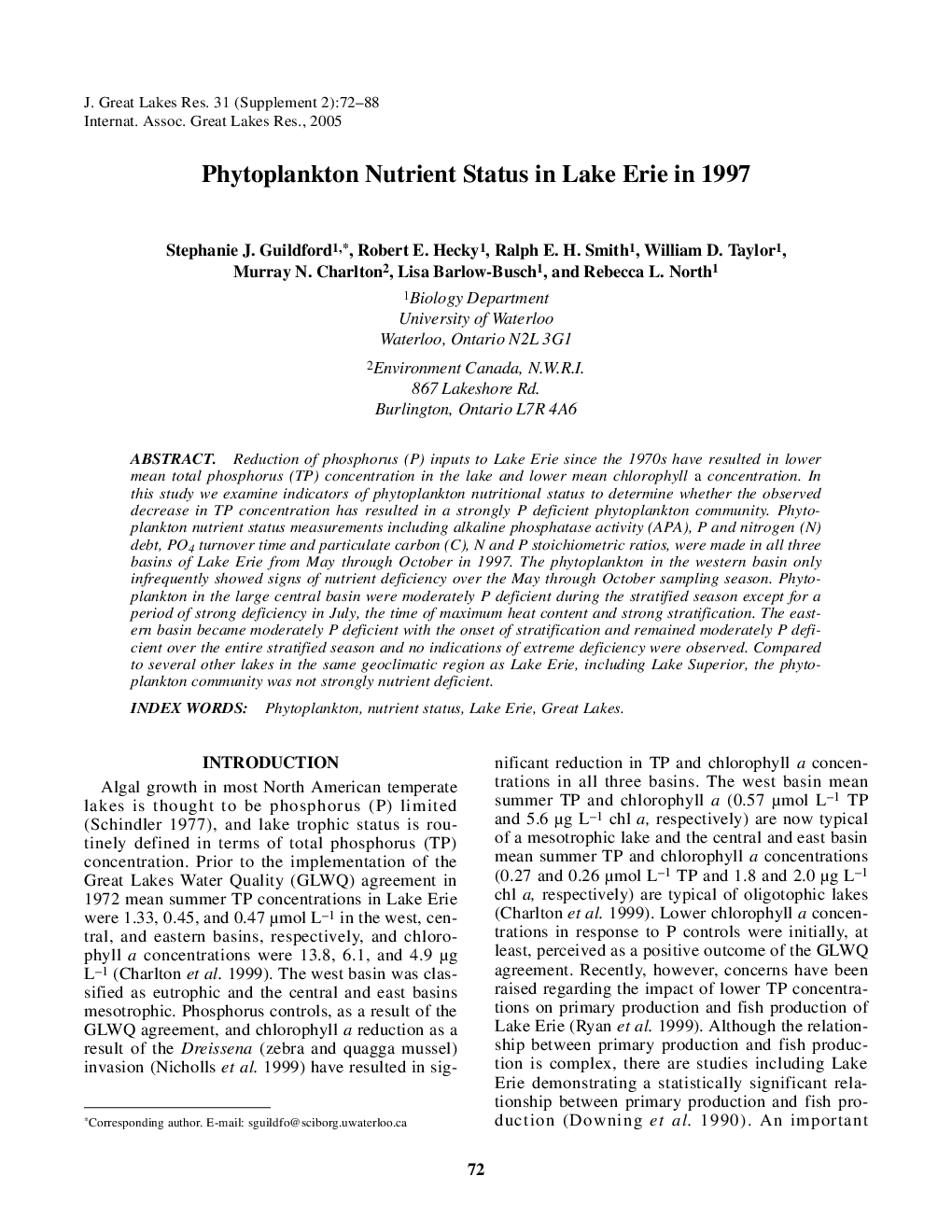| Article ID | Journal | Published Year | Pages | File Type |
|---|---|---|---|---|
| 9450241 | Journal of Great Lakes Research | 2005 | 17 Pages |
Abstract
Reduction of phosphorus (P) inputs to Lake Erie since the 1970s have resulted in lower mean total phosphorus (TP) concentration in the lake and lower mean chlorophyll a concentration. In this study we examine indicators of phytoplankton nutritional status to determine whether the observed decrease in TP concentration has resulted in a strongly P deficient phytoplankton community. Phytoplankton nutrient status measurements including alkaline phosphatase activity (APA), P and nitrogen (N) debt, PO4 turnover time and particulate carbon (C), N and P stoichiometric ratios, were made in all three basins of Lake Erie from May through October in 1997. The phytoplankton in the western basin only infrequently showed signs of nutrient deficiency over the May through October sampling season. Phytoplankton in the large central basin were moderately P deficient during the stratified season except for a period of strong deficiency in July, the time of maximum heat content and strong stratification. The eastern basin became moderately P deficient with the onset of stratification and remained moderately P deficient over the entire stratified season and no indications of extreme deficiency were observed. Compared to several other lakes in the same geoclimatic region as Lake Erie, including Lake Superior, the phytoplankton community was not strongly nutrient deficient.
Related Topics
Physical Sciences and Engineering
Earth and Planetary Sciences
Earth and Planetary Sciences (General)
Authors
Stephanie J. Guildford, Robert E. Hecky, Ralph E.H. Smith, William D. Taylor, Murray N. Charlton, Lisa Barlow-Busch, Rebecca L. North,
